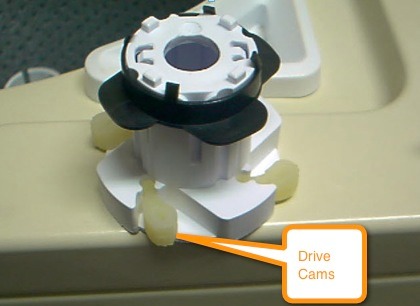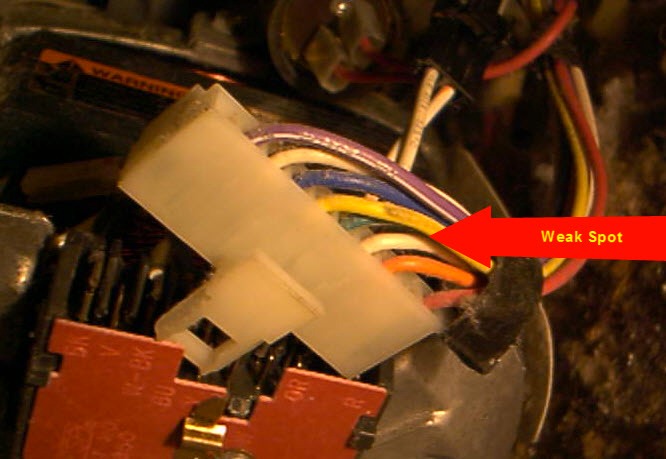Before agitation begins the washer must be full of water. Or to be more specific, the water level switch must be happy. "Won't Agitate" can easily resolve itself to won't fill. But let's assume that you have already eliminated that problem and the washer is full of water and will not agitate. (For non-agitator washers such as the energy efficient Cabrio see below.)
Mechanical Problems
The first question is , "Is the motor running?" If it is, the problem is mechanical. If not, the problem is electrical. With a machine tilted at an angle you should be able to rotate the motor/belt slowly by hand and make the agitator move back and forth. By reversing the rotation the basket should slowly spin.

Quick Inspection Method
Mechanical Failures
1. Broken agitator drive cams or block. These small cams drive the top of many agitators.

Agitator Drive Dogs
2. Broken coupling on a Whirlpool Direct-Drive.

Motor Coupling
3. Broken belt on any belt drive.
4. Sheared GE agitator drive block, called a "dome."

5. All agitators are driven by a spline similar to the GE and all are prone to getting stripped by heavy loads.

Electrical Problems
Does the motor hum at all? See if you can rotate the motor or belt checking for any blockage of movement. It should move freely by hand. If not find out why. If there is no hum at all the motor is bad or getting no power.
If the motor is humming, but not turning, you either have a bad motor or a bad timer. It is hard to determine which. It takes two sets of windings to get a motor going. One set will only make it hum. The quickest way is to plug in a spare motor externally with out installing it. I know. Where in the world do I get a spare motor?
Well, if you begin to see a lot of one model in your area it is not hard to locate a used spare. There is also a motor test kit on the market for expressly this purpose. I don't own one. So what do I do?
Check the harness at the motor.

Direct Drive Harness
This is where the shaking takes place and the weak spot. Wiggle the timer shaft; move the speed switch to other settings and try all the cycles. Often the washer may come to life in only one sector of the timer. If the motor is single speed and works on one cycle but not the any other, the timer is bad. If the motor is multi-speed and works fine on only one speed, the chances are good that the motor is bad. Does the motor smell like it burned? Did the customer notice any odors? You may elect to purchase both a motor and a timer and experiment taking back the one not needed.
Other electrical possibilities:
1. Bad lid switch.
2. There is a remote chance that there is a break in the wiring harness.
High Efficiency Models
On machines with no agitator a computer controls fill and agitate. The computer will run the motor a few seconds to test the load size before turning on the water. Their logic is different from what was explained previously. The best approach is to enter the diagnostic mode and run the washer thru a test series to determine what is working and what is not. Only then can you quickly try different parts of the cycle. The diagnostic cycle replaces the old method of advancing the timer manually for test. Entering diagnostic will be found under specific manuals for each design.